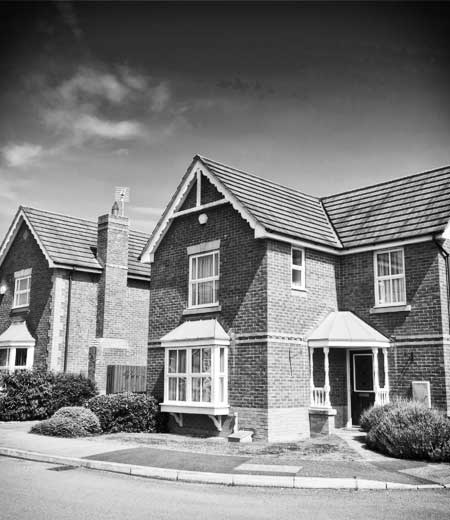How to Improve the Energy Efficiency in Homes
Ensuring households are as efficient as possible is the most effective way of saving money on energy bills.
Many UK houses suffer from poor insulation and ventilation which makes it hard to properly regulate the temperature of a home, leading to draughts, cold spots and dampness, which can have adverse effects on your property.
Insufficient ventilation can contribute to condensation which can lead to mould, and not having good insulation also causes dampness due to the amount of heat which escapes the room.
By making energy efficient choices for your home, you can reduce your carbon footprint as well as save money on your monthly bills. We have suggested several ways in which you can make your property more energy efficient.
Fabric First
When looking how to make your home more energy efficient you may think about changing the boiler to improve the heating. However, this should be the last thing you look at and your focus should be on keeping heat in by taking a ‘fabric first’ approach.
This begins by assessing how well your how well your property retains heat. If you can’t keep the heat in then replacing your boiler to reduce your emissions won’t have the desired effect, so you should consider this first before making any decisions. Upgrading your heating should be the final step!
Upgrade your insulation
The insulation of homes can sometimes be old and inefficient, which can cause lots of heat to escape your property. During the winter months when your heating is on, poor insulation can leave a bad impact on the environment but can also lead to higher energy bills, which is why it is so important to ensure your home is effectively insulated.
There are many methods of insulation which you can use depending on the homeowner and property requirements, including internal, external and cavity wall insulation.
Cavity wall insulation is when efficient, thermally effective material is placed in between the cavity wall to help retain heat and when installed correctly it can be an extremely effective technique.
Our CQ Assured Scheme means all our members have sufficient skills and knowledge to be able to remove existing cavity wall insulation, ready for it to be replaced with efficient alternatives, which gives homeowners reassurance that the job will be completed to the highest standards.
As well as the walls, lots of heat gets lost through the roof of a property, so it might be worth making sure that this is fully insulated as well.
Refurbishing a Conservatory
While conservatories often provide homes with a beautiful light-filled space, one downfall is that the large, glazed area leads to difficulties maintaining a consistent temperature in the various seasons, as they aren’t very well insulated.
Replacing your glazed conservatory roof with a solid one could help make your home more efficient, as they are lightweight with fantastic thermal performance.
They improve ventilation, insulation and reduce heat loss to transform conservatories into comfortable living spaces which can be used all year round.
By choosing a Certass certified installer you can be assured that they have all the right skills to do the job properly.

Replacing windows
Windows can be a big cause of heat loss in a home, especially older models or ones which aren’t installed correctly.
Older windows can often be very inefficient, even if they’re double glazed. Window Energy Ratings (WERs) were introduced in 2002, meaning that all windows must meet a minimum energy efficiency threshold to pass Building Regulations.
WERs began to measure the efficiency of windows on a universal, easy-to-use chart with ratings going from A to G, with A being the highest. All windows being installed now have to have a rating of C or above, or a U-value of 1.6 W/m2K or lower. A U-value measures the rate of heat loss of a specific area.
The WER is calculated by taking a number of things into account such as heat loss, solar gain and u-values of several parts of the window and combining them into one overall rating to show how efficient the windows are.
The Certass Thermal Rating Register shows WERs in an understandable traffic light system and shows that the windows are compliant with Building Regulations and fitted by a certified Certass installer.
Choose a certified home improvement installer
By looking at the fabric of your property first, there are lots of basic ways in which you can improve the efficiency of your home. For a tradesperson to carry out any of your home improvement projects, they must be registered with a UKAS accredited, government approved certification scheme.
The Certass certification scheme covers a wide range of refurbishment jobs, including conservatory roofs, cavity wall insulation and replacing windows and doors. Make sure you choose a certified installer to give yourself peace of mind that the job you want is being done professionally and meets all the required regulations.
Find a Certass tradesperson through our online directory and start a conversation about your home’s energy efficiency today.


